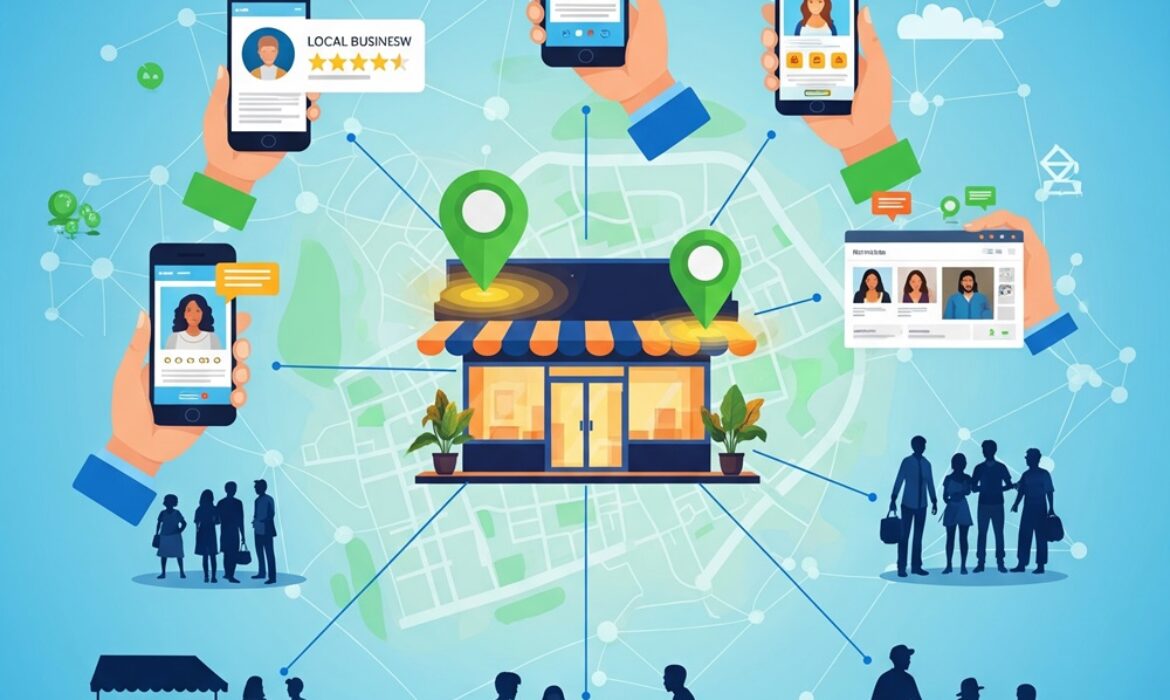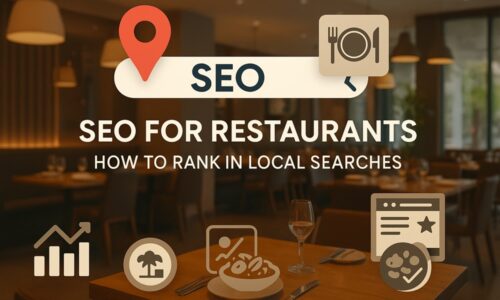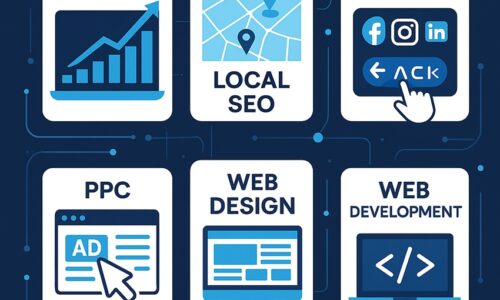In today’s highly connected digital world, the power of local SEO and hyperlocal targeting cannot be overstated. Whether you’re a small business owner looking to attract customers in your city or a larger enterprise trying to make a mark in specific neighborhoods, understanding and leveraging local SEO and hyperlocal targeting can dramatically improve your online visibility. This detailed guide will walk you through what local SEO is, why it’s important, how to optimize for it, and how hyperlocal targeting takes it one step further.
What is Local SEO?
Local Search Engine Optimization (SEO) refers to the process of optimizing your website and digital presence to rank higher in search results for queries that are location-specific. This includes searches for businesses, services, and products within a defined geographical area. Local SEO is a strategy employed by businesses aiming to appear in local search results, typically when someone searches for a product or service “near me” or within a specific city, region, or neighborhood.
Google, the world’s leading search engine, has made significant strides in improving the quality of local search results. Through algorithms like Google My Business (GMB) and local map packs, businesses can now appear at the top of search results when users search for relevant local queries. This makes local SEO an indispensable part of digital marketing for businesses that rely on foot traffic and local clientele.
Why is Local SEO Important?
Local SEO plays a pivotal role in helping businesses increase their visibility within their geographic location. Here’s why local SEO should be a priority:
- Increased Foot Traffic and Sales: Businesses that optimize for local SEO are more likely to appear in search results when potential customers are nearby, increasing the likelihood of foot traffic to physical stores. A higher number of people will visit your store or office, ultimately boosting sales and customer engagement.
- Targeting Highly Relevant Audience: With local SEO, you’re targeting users who are actively looking for your services or products within a specific location. This is much more relevant and effective compared to a broad SEO strategy that casts a wide net.
- Mobile Usage: With the rise of smartphones, local search has become even more important. According to Google, nearly 76% of people who search for something nearby visit a business within a day, and 28% of those searches result in a purchase. These numbers highlight the importance of local search optimization for mobile devices.
- Competitive Advantage: Many local businesses still neglect local SEO, leaving a significant opportunity for those who do optimize their digital presence. By implementing local SEO strategies, your business can outshine competitors in your area.
- Improved Brand Trust: Businesses that appear on local searches, particularly in the “map pack,” gain more trust from users. Customers are more likely to click on businesses they see in local search results because they consider them to be more credible and trustworthy.
Key Components of Local SEO
For a business to succeed with local SEO, certain components must be optimized:
1. Google My Business (GMB) Listing
A Google My Business listing is one of the most important elements of local SEO. It’s a free tool that allows you to manage your business information on Google, such as your name, address, phone number, hours of operation, and website link. GMB listings also enable businesses to appear in local search results, Google Maps, and the Local Pack (the three businesses displayed in the map section of search results).
To optimize your GMB listing:
- Claim and Verify Your Listing: Ensure that you have claimed your business on Google My Business and verified it through the Google verification process.
- Accurate Information: Double-check that your business name, address, and phone number (NAP) are consistent across all online platforms and match exactly with what is shown on your GMB listing.
- Encourage Reviews: Customer reviews play a significant role in local SEO rankings. Encourage satisfied customers to leave positive reviews on your GMB profile. Responding to reviews shows engagement and builds trust.
- Optimize for Keywords: Use keywords relevant to your business and location in your GMB profile, especially in your business description, services, and products.
- Post Regular Updates: Use Google My Business posts to share offers, events, or updates. These can show up in local search results and help keep your listing fresh.
2. Local Citations and NAP Consistency
Citations are mentions of your business name, address, and phone number (NAP) on external websites. This includes directories like Yelp, Yellow Pages, and industry-specific listings. Local citations help search engines confirm that your business is legitimate and relevant to a specific location.
- Consistency is Key: Ensure that your NAP details are identical across all directories and websites. Inconsistent NAP data can confuse search engines and negatively impact your rankings.
- Use Trusted Directories: Aim to get listed on authoritative local websites and directories that are relevant to your business and industry.
3. Local Keywords
Local keywords are terms and phrases that include a geographic location. Examples include “best pizza in Mumbai” or “affordable dentist near me.” Optimizing for local keywords ensures your website ranks for searches relevant to users in your area.
- Research Local Search Trends: Use tools like Google Keyword Planner or Ubersuggest to identify high-volume, location-specific keywords for your business.
- On-Page Optimization: Incorporate local keywords into your website’s meta tags, page titles, headers, and content. Include location-specific phrases naturally in your blog posts and landing pages.
4. Mobile Optimization
More than half of all local searches are performed on mobile devices, so it is crucial to ensure your website is mobile-friendly. A responsive design ensures your website adapts to any screen size and provides a smooth user experience, which is critical for local SEO.
- Fast Loading Speeds: Optimize your website for fast loading times. Google considers page speed as a ranking factor, and slow loading websites may hurt your rankings.
- Local Structured Data Markup: Use schema markup to help search engines understand your location-specific content. This could include product offerings, customer reviews, or business hours.
5. Local Backlinks
Building backlinks from local websites helps improve your site’s authority and relevance for local searches. Collaborate with local organizations, blogs, or news websites for backlinks that are relevant to your business and geographic area.
- Local Sponsorships or Events: Partnering with local events, charities, or organizations is a great way to earn local backlinks.
- Guest Blogging: Write guest posts for local blogs, offering content that adds value to your community. This will help you build relationships and earn relevant backlinks.
What is Hyperlocal Targeting?
While local SEO targets a broad region, hyperlocal targeting takes it a step further by focusing on a much smaller geographic area. Hyperlocal targeting focuses on attracting customers in a very specific neighborhood, street, or even a block. This approach is beneficial for businesses that rely on highly localized clientele, such as coffee shops, boutique stores, or local service providers like plumbers or electricians.
Hyperlocal targeting allows businesses to tailor their marketing efforts for very specific user behaviors. For instance, a coffee shop may focus its marketing on people within a two-mile radius, ensuring that its ads or search results reach people who are most likely to visit in person.
How Hyperlocal Targeting Enhances Local SEO
Hyperlocal targeting can enhance your local SEO efforts in several ways:
- More Personalized Marketing: By focusing on a smaller geographic area, you can tailor your content and marketing strategies to meet the needs and preferences of the local community. This can include localized offers, events, or products that resonate with nearby consumers.
- Higher Conversion Rates: Hyperlocal targeting focuses on a smaller audience, but one that is more likely to convert. For example, a pizza shop near a local college might attract more customers by targeting students specifically within a 1-mile radius.
- Precise Data Analytics: With hyperlocal targeting, businesses can gather detailed data on customer behavior, preferences, and purchasing patterns within a specific area. This allows for more effective segmentation and marketing strategies.
- Improved Engagement: By targeting people in your immediate neighborhood, you can engage with them on a deeper level. Social media platforms like Facebook and Instagram allow businesses to target ads based on location, which can help create community-driven engagement.
Best Practices for Hyperlocal Targeting
To effectively use hyperlocal targeting in SEO, businesses should focus on several key strategies:
1. Optimize for “Near Me” Searches
As smartphones become the primary tool for conducting local searches, many users search for businesses “near me.” Optimize your content for these types of searches by incorporating location-based keywords into your website, blog posts, and Google My Business profile.
2. Leverage Social Media for Local Engagement
Social media platforms like Facebook, Instagram, and Twitter offer powerful tools for targeting ads based on geographic locations. By creating hyperlocal ad campaigns, businesses can reach customers who are physically nearby, increasing the likelihood of engagement.
3. Local Reviews and Testimonials
Encourage customers to leave reviews on Google, Yelp, or other local platforms. Positive reviews are crucial for both local SEO and hyperlocal targeting, as they provide social proof and enhance your reputation within the local community.
4. Geo-Targeted Ads
Use geo-targeted advertising to promote your business to specific local areas. Platforms like Google Ads and Facebook Ads offer hyperlocal targeting options, allowing businesses to show their ads to users within a set radius of their physical location.
5. Host Local Events
Promoting local events or sponsoring community activities can be a powerful way to boost hyperlocal SEO. Not only does it create local buzz, but it also helps build backlinks from local event listings and blogs, increasing your authority in the community.
Conclusion
In today’s competitive digital landscape, local SEO and hyperlocal targeting are more crucial than ever. By focusing on localized marketing strategies, businesses can effectively capture the attention of nearby customers and drive foot traffic. Whether you are a small business or a larger enterprise, implementing robust local SEO tactics and targeting specific neighborhoods or regions through hyperlocal targeting will help you stay ahead of the competition, connect with customers on a deeper level, and grow your business.
By leveraging tools like Google My Business, ensuring NAP consistency, optimizing for mobile, and using location-based keywords, you can boost your visibility in local search results and improve your rankings. With hyperlocal targeting, you can ensure that you’re reaching the right audience at the right time, leading to higher conversions and greater customer loyalty. Local SEO and hyperlocal targeting are no longer optional—they are essential elements of a successful online marketing strategy.






